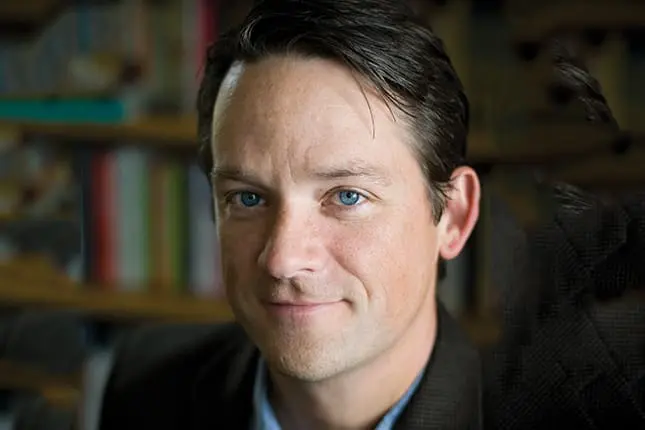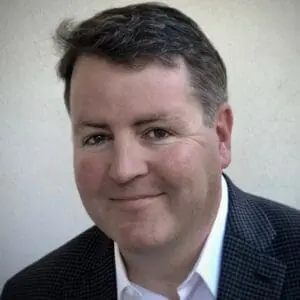Many of us know people who are seemingly blessed with an innate ability—a “natural” athlete, the musician who has “the gift” for an instrument, or the neighbor born with a green thumb. We like to ascribe their skill and accomplishments to inborn capacities because, in some way, it lets us off the hook. It’s not our own lack of discipline and imagination that limits our accomplishments: it’s our cursed genes.
But journalist Daniel Coyle’s bestselling Talent Code makes it hard to hold on to that explanation for what distinguishes the exceptional from the mediocre. After researching a range of extraordinary athletes, master musicians, and outstanding achievers in various fields around the world, Coyle found a particular pattern of focused, guided practice and instruction that creates top performers across many disciplines. Genes matter, but not as much as you think. In the following interview, Coyle describes the essential ingredients that are as relevant to increasing therapeutic effectiveness as they are to other kinds of advanced skills.
——
RH: How did you become interested in talent?
COYLE: I found a newspaper clipping a few years back that described a unique tennis club outside of Moscow called Spartak, which had produced more top-20 women players than the entire United States over the past few years. I went and found one junky indoor court in a freezing climate, and kids doing slow-motion drills. I started visiting other similar places. It turns out there are Spartaks in almost every discipline—in sports, obviously, but also in art, math, chess, and music. Although I don’t know, I’ll bet there’s one in psychotherapy, too.
RH: Are these places the “talent hotbeds” you referred to in the book?
COYLE: Excellence doesn’t get sprinkled around the globe randomly: it takes root and it grows and blooms in special places I call “hotbeds.” The notion of the book was to go to these hotbeds and look at them from a couple of different angles. One of them is behavioral. What behavioral principles do they follow? What are they doing? The other one is environmental. What sort of mutation in going on in the environment? How do teachers and students communicate? So that’s what I did. I explored nine of these places and investigated others and came up with a pattern, a fingerprint of behaviors in the environment that occur over and over.
RH: What’s the fingerprint of excellence?
COYLE: There seem to be three recurring factors. The first is deep practice. By now, it’s sort of in the lexicon that it takes 10,000 hours of practice to become a world-class expert. But when you look closely at that practice, whether it’s tennis or chess or math or art, you’re operating right on the edge of what you can do. You’re making mistakes, you’re sensing those mistakes, and you’re fixing them.
RH: You’re staying actively involved and extremely focused.
COYLE: Deeply engaged in the process. At these places, I kept seeing a Clint Eastwood expression on people’s faces. Whether it was a little kid playing soccer or somebody playing the harp, there was this uncomfortable place where they were reaching intensely, failing, sensing that failure, and reaching again for the right answer. And when you really zoom in on what’s happening when you’re in that state, you’re making new connections in the brain—building a map of what you want to do. Those “mistakes” you’re making aren’t really mistakes, they’re the information you use to get the solution.
The message of the book is, “Look, it’s not that everybody has unlimited potential, but it’s rather that everyone has one way forward. If you’re going to get better, you have to get into the zone, immersing yourself in deep practice.”
RH: So Michael Jordan wasn’t born a superstar; he had to work at it.
COYLE: He’s a beautiful example. He was deservedly cut from his high school team because he wasn’t that good. Fortunately, he had an older brother named Larry, who was quite a good coach and a good competitor for him. Michael had this incredibly difficult environment and still developed the skills that he needed to succeed. He’s a ferocious guy, but the unique thing about him, as with all these people, is their drive, more than their innate abilities. This is the second part—the drive. It takes a lot of willpower and passion to want to get in that area where you put the Clint Eastwood face on and spend hours intensively working on something that’s difficult to do.
RH: And that’s the tennis courts in Russia.
COYLE: And the soccer fields in Brazil and the music camp in upstate New York. To do that kind of deep practice takes a tremendous amount of energy that’s created by a process I call “ignition”—giving people a vision of what they want to become. These talent hotbeds have filled the windshield with people who serve as models of excellence, whom everyone can look at, stare at, and aim toward. “Windshield time” means regularly watching other people work hard and excel—which often helps us take on those same behaviors. To stare every day at someone you want to become is a very powerful thing.
RH: We need to have a model to help us visualize our goal?
COYLE: Fill the windshield. Stare at who you want to become for a few minutes each day. That’s what’s happening in the talent hotbeds.
RH: Do you have any examples?
COYLE: Jeff Cohen at Yale gave a group of students an innocuous paper that had a biography of a mathematician. The guy’s name was Nathan Jackson. The story was a simple account of his life—where he went to school and how he liked to jog on the weekend. In the corner, it had a little information about Nathan, including his birthdate. For half the class in the experiment, the birthday was arranged to match the student’s birthday. Kind of cool, right? So they had this momentary identity linkage with Nathan Jackson.
Then the experimenter gave everyone a math test, and on the test was an impossible problem; no matter how much time you spent, it couldn’t be solved. The experimenter was to examine how long each group would spend on the impossible problem. How willing were they to go into that zone where they were failing, where they were reaching, where they were doing it over and over again without any luck? And it turned out the birthday-matched group worked 62 percent longer than the other group.
RH: Identifying with an expert helps ignite our drive.
COYLE: And that brings us to the third ingredient I kept seeing at the hotbeds: master coaches—people who were absolutely, quietly, deeply, great coaches. They connected individually with the person; they gave small, short, specific instructions. They weren’t giving big speeches. They were almost like GPS machines, saying “Move your hand a little over here” and “Try this now,” and navigating them home. You’re getting good feedback, you’re sensing your mistakes, you’re reaching where you haven’t been before, and the coach helps direct that process.
RH: You can actually see tangible results. How might this apply to therapists?
COYLE: Many professionals stop being coached—which, if we look at it from this point of view, is sort of insane. Why would you ever stop being coached? Why would a surgeon ever stop being coached? Why would an opera singer ever stop being coached? Why would a therapist stop being coached? At the top levels, it’s kind of refreshing to see some people are beginning to accept coaching.
In our lives, we grow up with a story about talent that we’re told by our parents, by our teachers, by our books and movies and comic books: we’re somehow born with our innate gifts that determine how far we can go in life. That story of the extraordinary, naturally gifted achiever—“The Natural”—is as captivating as it is crippling. It teaches us to steer away from pushing ourselves and getting the coaching necessary to take us to the next level because if we don’t have talent, there’s no point in trying to grow it.
Ryan Howes
Ryan Howes, Ph.D., ABPP is a Pasadena, California-based psychologist, musician, and author of the “Mental Health Journal for Men.” Learn more at ryanhowes.net.













